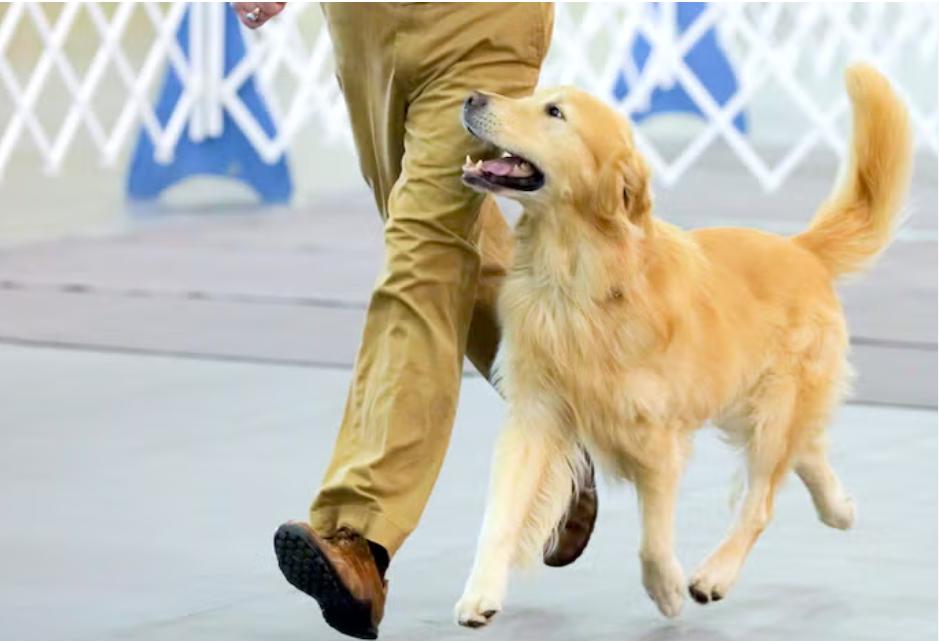What Does Heel Mean in Dog Training? A Comprehensive Guide
Understanding the concept of “heel” in dog training is crucial for any dog owner wanting a well-behaved pet. “Heel” means your dog walks closely beside you, maintaining a position in line with your leg without pulling on the leash. It’s a fundamental command that promotes harmony and control during walks, making outings more enjoyable and safe for both the dog and the owner. Mastering this command can seem daunting at first, but with patience and proper techniques, even novice dog trainers can succeed.

Why is Heel Important in Dog Training?
Discuss the role of heeling in dog behavior and control
Heeling plays a significant role in a dog’s overall behavior and control. It teaches dogs to follow your lead, reinforces your position as the pack leader, and promotes a structured environment. When a dog understands the “heel” command, they are more likely to listen to other commands and exhibit fewer behavioral issues.
Benefits of teaching your dog to heel
The benefits of teaching your dog to heel are numerous. Firstly, it enhances your walks, transforming them into pleasant experiences without the stress of your dog pulling. Secondly, it provides mental stimulation for your dog, as they need to focus on maintaining pace with you. Finally, successful heeling can improve your dog’s confidence and deepen the bond between you two, as it involves consistent interaction and trust.
The importance of heel for safety and discipline
Heel training is crucial for safety and discipline. A dog that heels is less likely to dart into dangerous situations, such as heavy traffic or confrontations with other animals. It also helps in crowded or noisy environments, ensuring that your pet stays close and under control. Additionally, heel training instills discipline, teaching your dog to manage impulses and behave properly in different scenarios.
The Basics of Teaching Heel: A Step-by-Step Guide
Preparing for training: Tools and environment
Start by gathering essential tools such as a standard leash, treats, and a clicker if used. Select a quiet environment for initial training sessions, free from distractions.
Understanding the dog’s mindset and readiness
Ensure your dog is calm and focused before starting. A tired or overly excited dog is less likely to respond well. Use positive reinforcement to create a conducive mindset for learning.

Basic steps for teaching “heel”: verbal command, body positioning, and rewards
Common mistakes to avoid during training
Avoiding these common mistakes can lead to efficient training: - Inconsistency: Always use the same command and position. - Overuse of Treats: Rely on praises too, not just treats. - Punishments: Use positive reinforcement instead of correction methods that may scare your dog.
How to Troubleshoot Common Heel Training Problems
Addressing distractions during training
Keep initial training sessions in quiet areas. Gradually introduce distractions and reinforce the heel command. Use higher-value treats to retain your dog’s focus.
Correcting improper heeling techniques
If your dog pulls ahead or lags, stop immediately and reset them beside you. Use the leash gently to guide them back to the heel position without pulling.
Managing inconsistent responses from the dog
Consistency is key. Ensure that everyone walking the dog uses the same commands and techniques. Be patient, as it may take time for your dog to consistently respond.
Reinforcement tips and how to stay consistent
Set regular training sessions and remain patient. Increase distractions gradually and maintain rewarding behavior. Consistency and patience will yield the best results.
How Long Does It Take to Teach Heel?
Teaching a dog to heel varies depending on the dog’s age, breed, and previous training. Generally, it requires several weeks of consistent effort for most dogs to master the command fully. Puppies may learn faster due to their adaptability, whereas older dogs may take longer due to ingrained habits. Factors such as your dog’s attention span, the frequency of your training sessions, and maintaining consistency greatly influence the learning time. Patience and consistency are essential. Celebrating small milestones, such as walking for short durations without pulling, will keep you motivated throughout the process.
Conclusion
Mastering the “heel” command is instrumental in ensuring a well-trained dog that can accompany you confidently anywhere. By understanding the benefits and diligently practicing the techniques, you’ll cultivate a strong bond of trust and respect with your furry companion. The key to effective training is consistency, patience, and positive reinforcement. Whether you’re working with a young puppy or an older dog, the time invested in teaching the heel command will result in more enjoyable and safer walks, leading to a well-disciplined and happier dog.
FAQ
Why is my dog not responding to the heel command?
Your dog may not respond due to distractions, inconsistent training, or lack of motivation. Ensure a quiet training environment, use consistent commands, and offer high-value rewards to retain their focus.
Can I teach my dog to heel if they are older?
Yes, older dogs can learn to heel with patience and consistency. While it might take longer due to ingrained habits, using positive reinforcement and clear commands will help achieve success.
How do I ensure my dog stays in the heel position during walks?
Consistency is crucial. Regularly practice the heel command and reward correct behavior. Gradually introduce distractions and maintain a steady pace. If your dog veers off, stop and reset them in the heel position before continuing.
